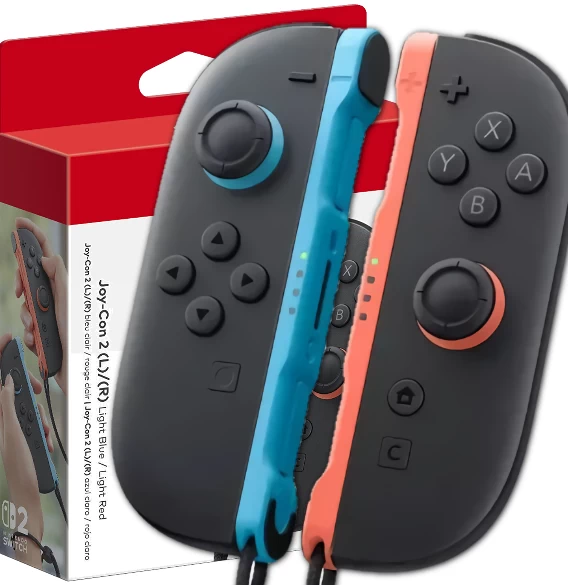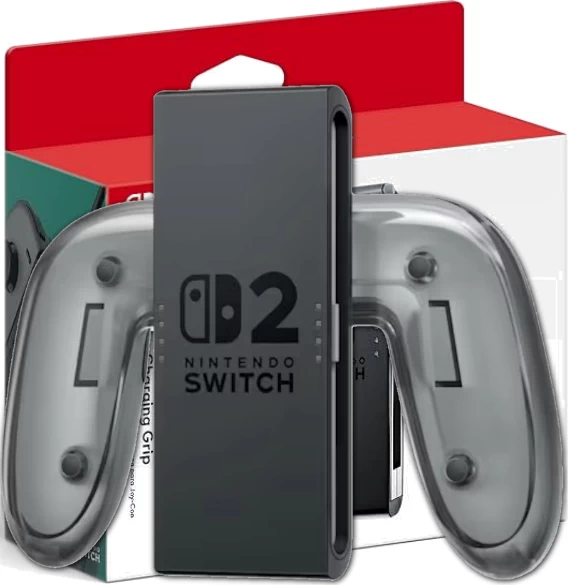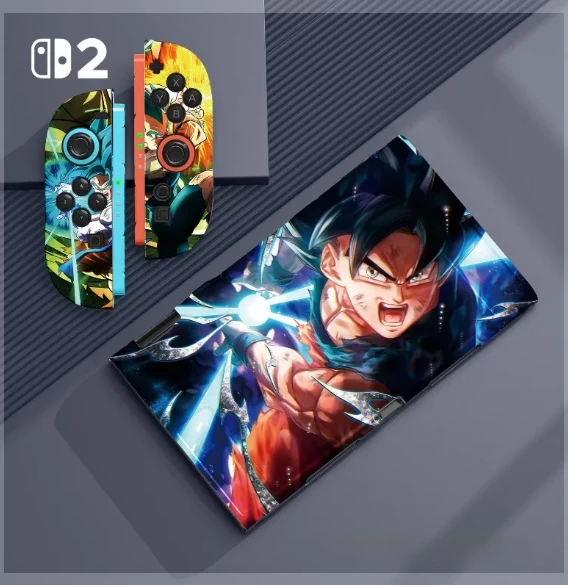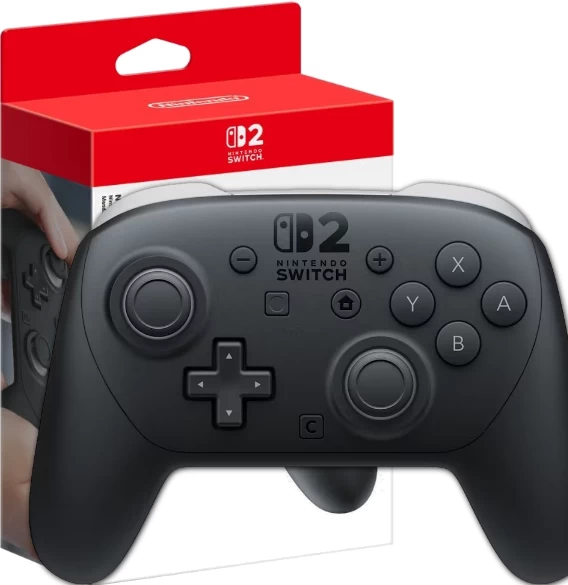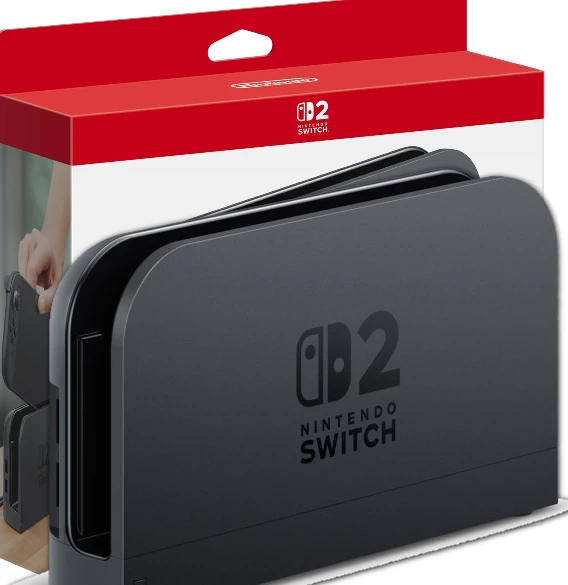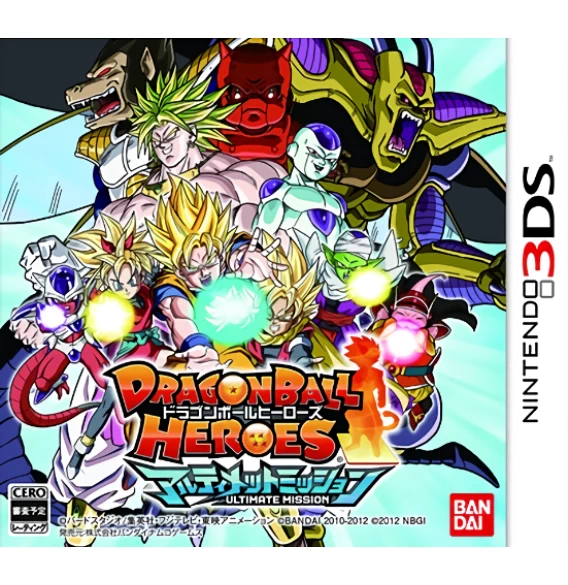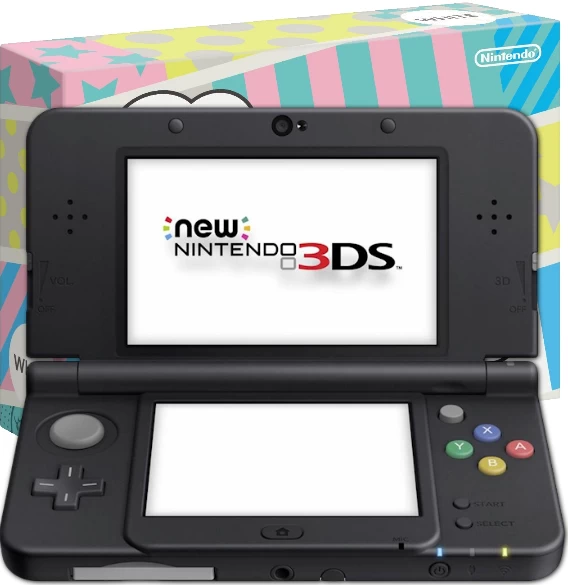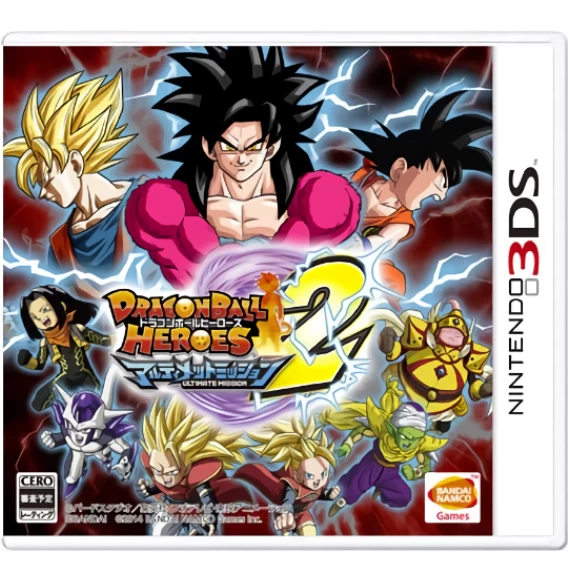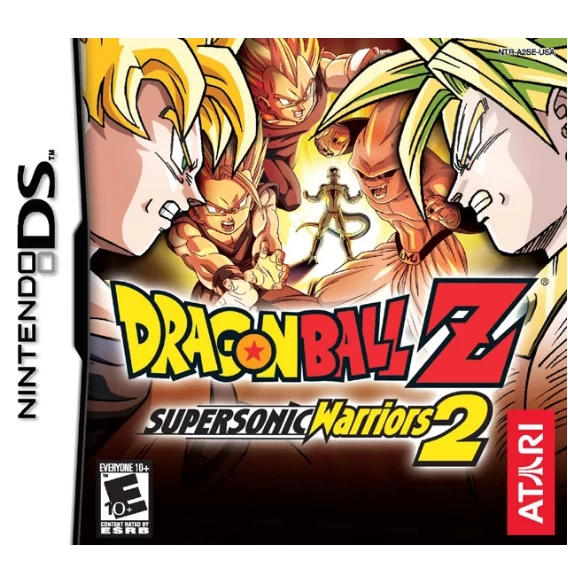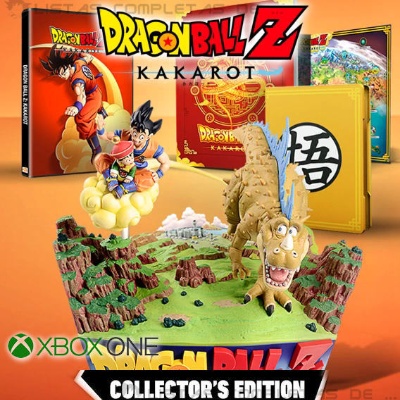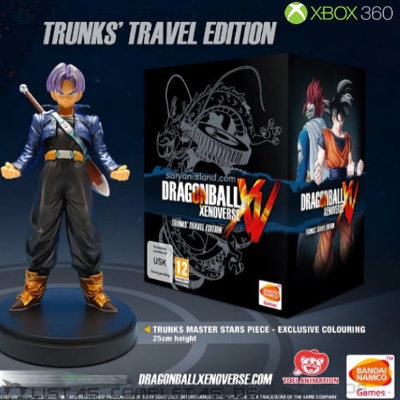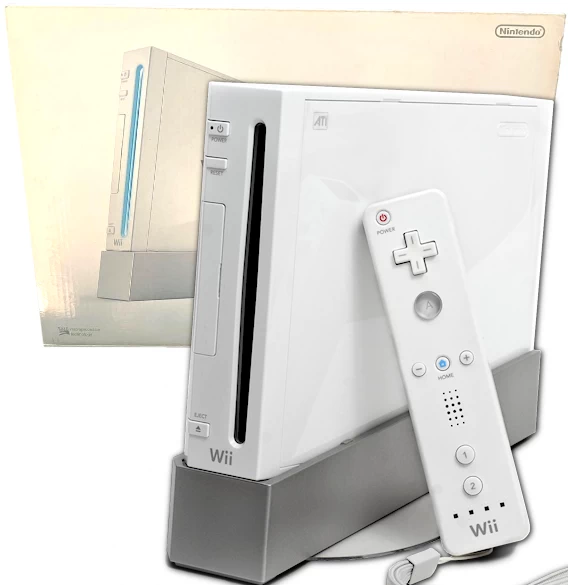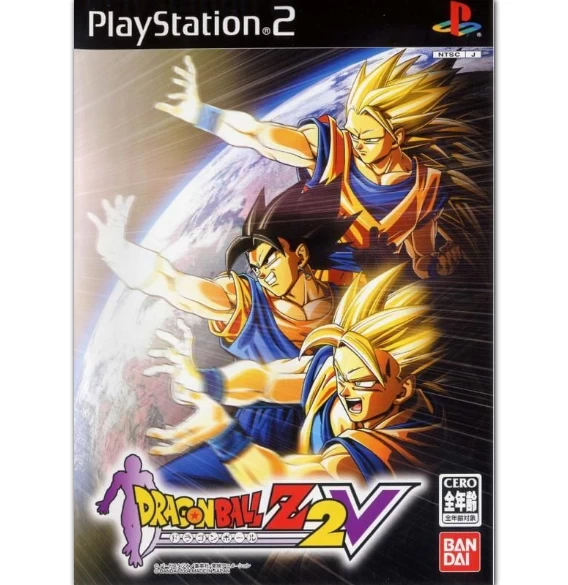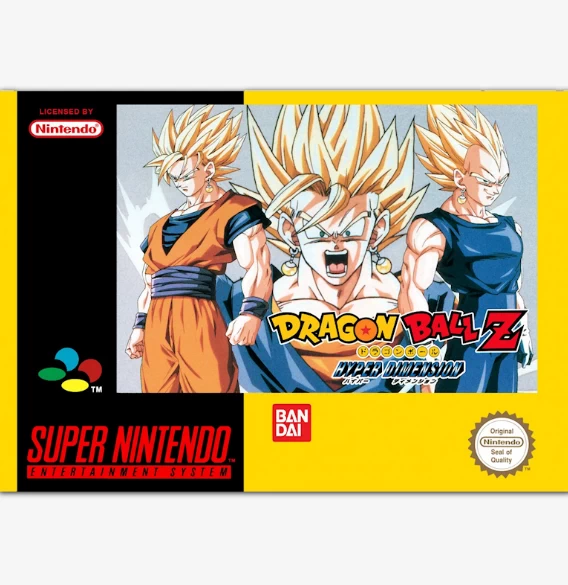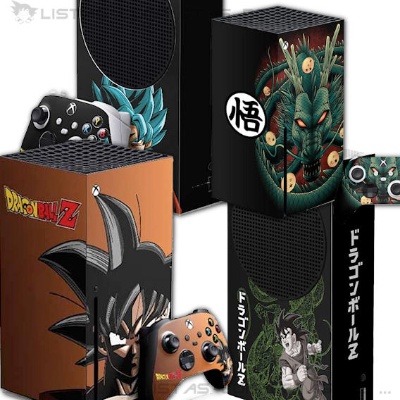All the Dragon Ball video games for the Nintendo Switch 2
The Switch 2 and the complete list of Dragon Ball games that exist for this console
On this page we will find all the games released specifically for the Switch 2 and their DLC's, along with all the console versions and some peripherals.
The Nintendo Switch 2 arrived in 2025 to replace the Switch 1, a more powerful console with better sound, storage, controls, screens, resolutions, and FPS to enjoy our Dragon Ball games.
Here we will find all the games and DLCs released specifically for the console, like Dragon Ball Sparking! ZERO, but remember that all DB games released for the Switch 1 are compatible with this console.
We will also see the complete list of all existing console models and some accessories.
The Dragon Ball and DBZ games released for the Switch 2, and their enhanced and/or collector's editions
For now, the complete list of games released specifically for the Nintendo Switch 2 console is short.
But all the games you have from the Switch 1, whether digital or physical, can be used on the Switch 2 without any problem.
Some games, like Sparking! ZERO!, are on both consoles, but the Switch 2 version has better graphics. And you only need to buy it once; the game automatically switches and adapts to the console it’s played on.
This list only includes games that are specific or adapted for the Switch 2.
All the Season Pass, DLC's or Expansions for your Dragon Ball games released for the Switch 2
Find here all the DLCs and Season Passes released for Dragon Ball games on your Nintendo Switch 2. Take advantage and use the filter to see only the DLCs or Season Pass of the specific game.
Remember that DLCs / Seasons can only be purchased from the console's e-Shop, which is region-based, and that DLC or Season Pass will only be available for the region where you purchased it.
The different versions and models of the Nintendo Switch 2 console
To play games for the Nintendo Switch 2, we need the console that supports these games, and for that purpose, Nintendo has released only one model to date.
Accessories and peripherals of the Switch 2 to be able to play Dragon Ball
To play properly, whether portable or docked, on our console you need certain accessories or peripherals, which usually come with the base console, such as Joy-Cons, the Joy-Con Grip, or the charging and connectivity Dock.
Remember you can use Switch 1 controllers on your Switch 2 wirelessly (physically they are not compatible).
So, here is a list of accessories and peripherals we can get to play Dragon Ball games on our Nintendo Switch 2, including some specifically dedicated to our favorite anime.
More complete lists of Dragon Ball games and video games.
We also have more complete lists of Dragon Ball games and video games cataloged by their gaming platform, including Board Games, PlayStation, Nintendo NES, etc.
Here are some of the Dragon Ball games and video games we have for you:
Discover some of the Dragon Ball games, video games, consoles, and collectible accessories. From the iconic NES and GameBoy to the latest PC, PS5, and X-BOX titles, as well as the timeless board games.
Dragon Ball: Sparking! Zero - Ultimate Edition
Dragon Ball: Sparking! Zero - Ultimate Edition
Dragon Ball: Sparking! Zero – Ultimate Edition was released on the same day as the standard edition, which only includes the base game. This edition, in addition to the base game, contains everything offered in the Deluxe edition—meaning it also grants access to the first season pass, which includes 3 DLCs, and early access to each DLC’s content 3 days before its official release.
What’s exclusive to this edition is the Ultimate Upgrade Pack, which includes: Goku (Super) outfit with Power Pole, emotes, backgrounds, a customization item, and the Super Shenron Summon—all of which are cosmetic items.
The 3 DLCs included in the first pass feature over 20 characters based on DB: Super and DB: Daima, along with cosmetics, and some story and battle content.
Dragon Ball Heroes: Ultimate Mission
Dragon Ball Heroes: Ultimate Mission
Dragon Ball Heroes: Ultimate Mission is a card game for the 3DS that recreates the arcade game Dragon Ball Heroes. In story mode, players can explore all the sagas of DBZ and GT.
new Nintendo 3DS
new Nintendo 3DS
The New Nintendo 3DS enhances handheld gaming with a faster processor, more stable 3D, and additional controls. Compatible with exclusives and classics, it's the ideal choice for Nintendo fans.
Dragon Ball Heroes: Ultimate Mission 2
Dragon Ball Heroes: Ultimate Mission 2
Dragon Ball Heroes: Ultimate Mission 2 is the second card game for the 3DS that recreates the Dragon Ball Heroes arcade game. This sequel introduces new game modes, cards, and storylines.
Dragon Ball Z: Supersonic Warriors 2
Dragon Ball Z: Supersonic Warriors 2
Dragon Ball Z: Supersonic Warriors 2 is the first DBZ fighting game for the Nintendo DS. It is a continuation and improvement of DBZ: Supersonic Warriors released for the Game Boy Advance, featuring more characters, modes, and enhanced graphics.
Dragon Ball Z: Kakarot - Collector’s Edition
Dragon Ball Z: Kakarot - Collector’s Edition
Dragon Ball Z: Kakarot – Collector’s Edition was released on the same day as the base game, but only for those who had pre-ordered it. This was the most complete edition available at launch, as it included the base game, all content from the Deluxe and Ultimate Editions, and exclusive physical content: access to the first Season Pass with two extra episodes based on Dragon Ball Z: Battle of Gods, permanent cooking item upgrades, the Additional Music Pack with 11 anime songs, and an exclusive travel item to move around the map during exploration and missions: Tao Pai Pai’s Pillar.
As additional physical content, it included a Dragon World map, a decorative steelbook case, an art book, and a diorama figure featuring Gohan, Goku, and the Dinosaur.
Dragon Ball Xenoverse (Trunks’ Travel Edition)
Dragon Ball Xenoverse (Trunks’ Travel Edition)
Dragon Ball Xenoverse Trunks’ Travel Edition is a special edition that includes additional game content — specifically a DLC to unlock Super Saiyan 4 Vegeta and two Frieza skins for your avatar. It also comes with a Future Trunks figure and a collector-style cardboard box.
Nintendo Wii | RVL-001
Nintendo Wii | RVL-001
The Nintendo Wii, or RVL-001, was Nintendo’s seventh-generation console, released to replace the GameCube. This console was a major gamble by Nintendo because it chose not to compete with Xbox and PlayStation in graphics power, instead focusing on gameplay and attracting casual players, not just gamers, introducing its new motion-sensing controllers to interact with games.
This console is also fully compatible with GameCube games, controllers, and memory cards.
It is Nintendo’s second home console to abandon traditional cartridges in favor of discs, but they are special discs developed by and for Nintendo, called Wii Discs, and it also reads GameCube mini-DVDs. However, the console does not play CDs, DVDs, or Blu-ray discs.
The console is region-locked, and games and memory cards are not compatible between consoles and games from different regions. There are disc-based methods to bypass this lock, or console modifications, which allow you to play your games for collecting purposes. This information is for informative purposes only, not for piracy.
Dragon Ball Z 2 V
Dragon Ball Z 2 V
Dragon Ball Z 2 V is a special collector’s edition of the video game Dragon Ball Z: Budokai 2, released a few months prior to the main launch.
This edition was only released in Japan, in exclusive collaboration with the V-Jump magazine, with only 2000 copies of this version of Budokai 2 produced.
Aside from its name and packaging, the game includes one key difference from the original: the ability to play as Cooler.
Dragon Ball Z: Hyper Dimension
Dragon Ball Z: Hyper Dimension
Dragon Ball Z: Hyper Dimension is the sixth Dragon Ball Z game released for the Super Nintendo and Super Famicom. It is also the fourth fighting game released for this console in 1996.
This game breaks away from the previous fighting games on the system and, although it remains a 2D fighting game, it brings much higher quality and smoother graphics. The screen no longer splits, there is now an energy bar to manage ki and attacks, and characters can transform during battles.
Its story mode covers from the Namek Saga —our battle against Frieza— up to Majin Buu’s defeat. It is worth noting that the story mode includes very epic illustrations for its time and console.
There are up to 9 playable characters, many with transformations, including Goku, who turns Super Saiyan, and Frieza, who reaches his final form, among others.
Nintendo DS
Nintendo DS
The Nintendo DS revolutionized handheld gaming with its innovative dual-screen design. With exclusive games and a vast library, it offers a unique touch and classic gaming experience anywhere.

